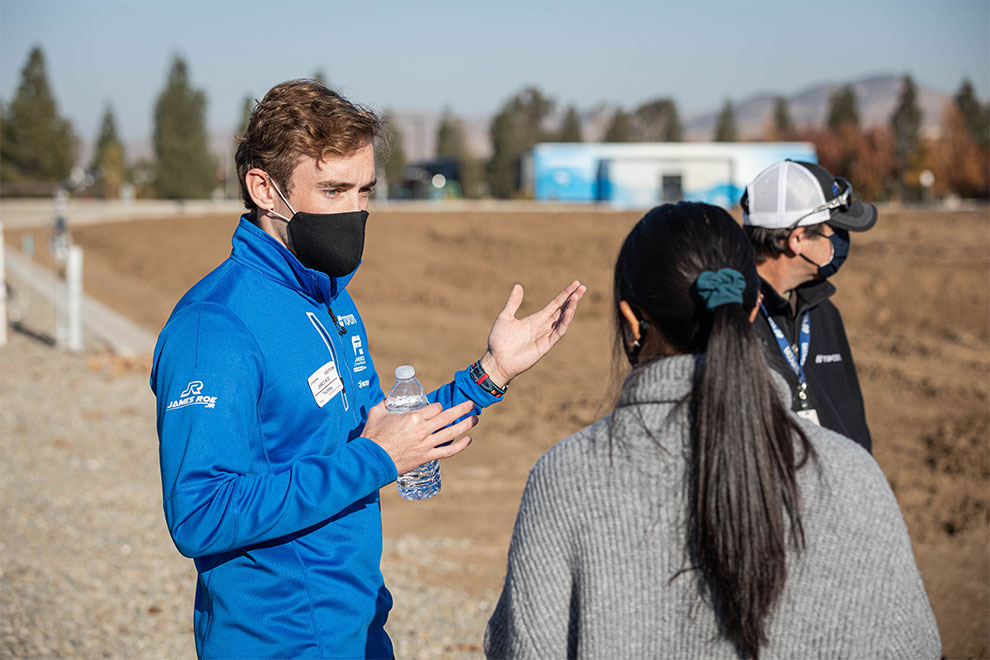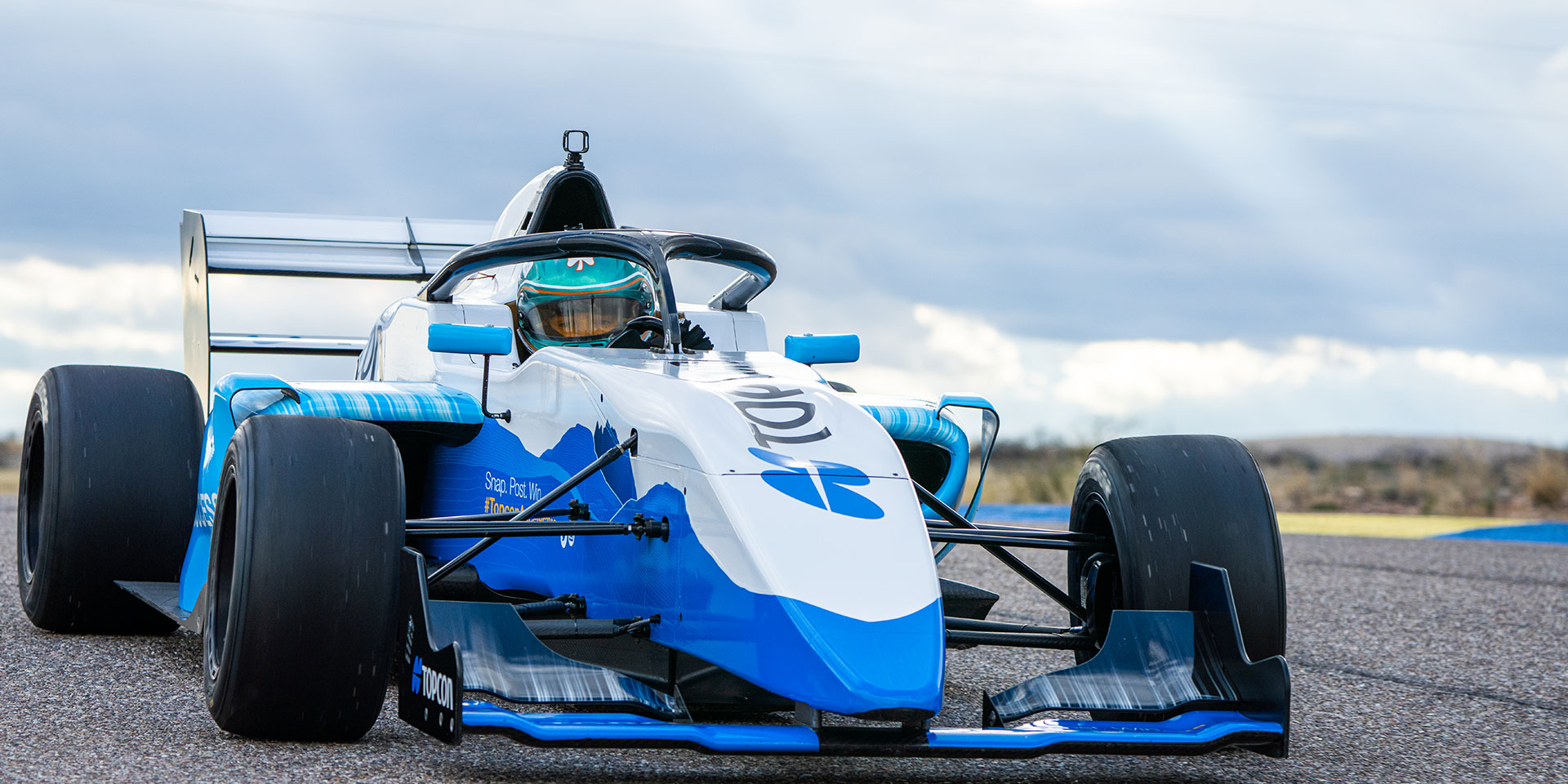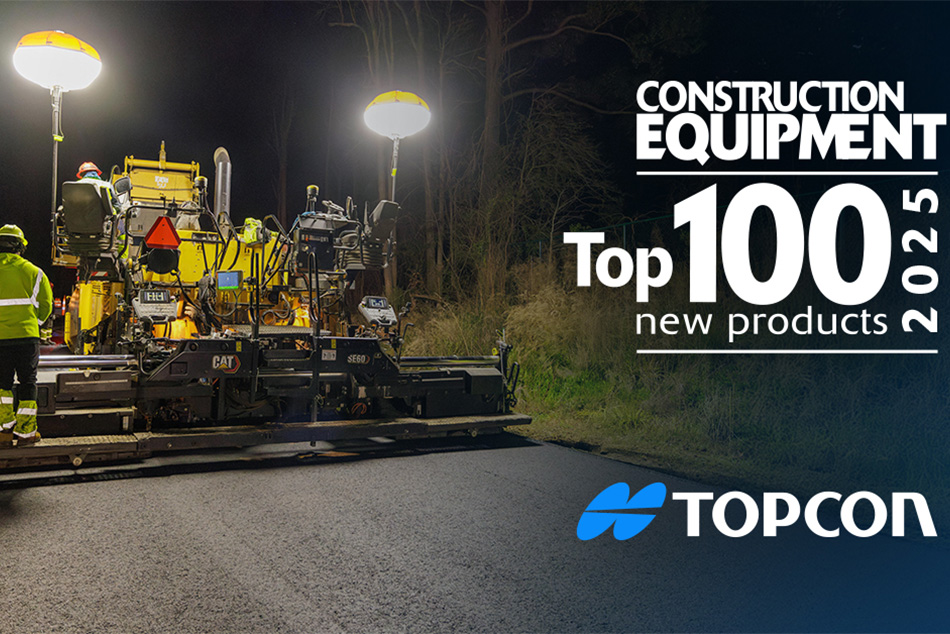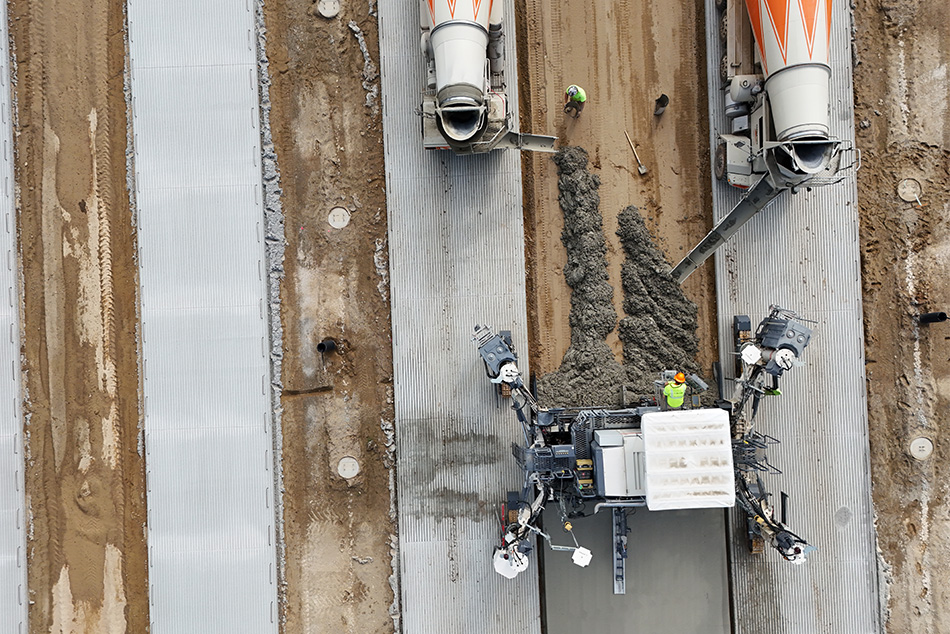If corporate sponsorships in motorsports racing today are any indication, interest in the sport is broadening . . . fast. Once the domain of automotive and tire manufacturers, tobacco companies and consumer products of every sort, today the logos of AT&T, IBM, HP, Microsoft, Kaspersky, etc., crowd each other for car space, barely readable as they fly by at speeds better than 200 mph. While auto racing of all types, be it Formula racing, NASCAR, IndyCar Series, etc., has been evolving at a dizzying pace, the presence of giants in high-tech, cybersecurity, data transfer and more, signal the prominent role which technology — and the data that drives it — play in 21st century motorsports. Their presence is evident in everything from the helmet worn by the driver to the surfaces on which today’s cars race. Technology, top to bottom.
"We drive a decent number of tracks on the U.S. circuit... However, there are also some for which the technology used to create the surface is outdated by 10-15 years and could benefit from replacement..."
James Roe, Jr., Formula 3 driver for Ireland-based CJJ Motorsports
Sensing an Issue
The notion of having sensors in a car sending a continuous stream of data to a central collection point is hardly new. As far back as the late 1970s, automotive engines used microprocessor-based modules, working in concert with catalytic converters, in an effort to meet federal emissions regulations. But, while today’s vehicles can tell us everything from the air pressure in each tire to fuel economy, the data emanating from current-design race cars sees that as little more than a jumping off point, according to James Roe, Jr., Formula 3 driver for Ireland-based CJJ Motorsports.
“During a run, literally everything in our race car — and the same holds true for most others as well — is measured and reported upon,” he said. “That includes standard monitoring such as fuel pressure, oil pressure, water temp, air intake temp and brake pressures, as well as more complex items such as throttle position, throttle opening, searing angles and suspension damper movement. Sensors gather it all and send the data — about 150 channels of it — to a data logger on the car, where it is stored. Then, after every session or race, a team data engineer comes over and take what looks like a USB jump drive out of the logger, plugs it into his laptop, downloads the data, replaces the drive and the car is ready to race again.”

Roe said the data logger is often referred to as “The Lie Detector” because there is no disputing the mind-numbingly dense packet of info it gathers. “Everything we do in that car, from the minute we flip on the power, is recorded,” he said. “It’s all right there.”
Unlimited Data Plan
With hundreds of gigabytes of data at their disposal, race teams can intricately review the car’s performance, as well as that of the driver, seeking to identify areas that can be improved upon, spotting pending issues before they become problematic, even confirming previous changes. According to Roe, the data is a veritable gold mine for the team’s vehicle engineers.
“Although they look at everything, 90% of the time the vehicle engineers are looking at performance,” he said. “They know what the tolerance of the car is and are seeking the best way to fit into that tolerance. How can we run the car lower? Is the suspension traveling and moving enough? Is the car bottoming out somewhere? Is our suspension at a point where it is not moving anymore?”
While the reliance upon data is without dispute, Roe said engineers still do come to the driver for their personal input.
“Almost all the engineers like to speak to the driver and say: ‘We see how it looks on the graph, but how does it feel?’” he said. “Or we can tell them that at one particular point in the run something didn’t feel quite right and they can look at that exact time in the data set to see what the problem might be. So, while the data is a key element, the driver’s ‘feel’ is still a huge component as well.”
Track Changes, On
Data mining aside, motorsports are — and always have been — a hotbed of innovation. In the quest to improve times, speeds and endurance, some of the brightest minds at work today, are making truly remarkable contributions in new technology — more than a few of which will find their way to the cars we drive, if they haven’t already. Everything from traction control to an active suspension to turbochargers have their roots in Formula 1 racing, and newer developments such as the Kinetic Energy Recapture System (KERS), which captures kinetic energy from braking and stores it for a “power boost,” hold equal promise.
But while all that innovation has allowed race cars across the spectrum to improve, until recently, relatively little has been done to ensure track surfaces show a commensurate improvement. True, some asphalt manufacturers offer specialized products designed to provide a higher-gripping capability, a more uniform surface texture and enhanced durability, specifically for use in racetrack applications. However, according to Roe, there are still some tracks on the U.S. circuit he races, that are undeniably lacking.
“We drive a decent number of tracks on the U.S. circuit, many of which have excellent surfaces,” he said. “However, there are also some for which the technology used to create the surface is outdated by 10-15 years and could benefit from replacement using current techniques designed to meet extremely high tolerances.”
The shortcomings Roe cites in such outdated tracks center around inconsistencies such as bumps and cracks, rises and brows. Because of the intense down pressure of the race cars, the surface tends to suffer greatly. In addition, the asphalt itself often tends to be very abrasive, presenting challenges — and adding costs — for race teams struggling with excessive tire wear throughout the race weekend.
"I connected with Ray, initially just for a coffee and to get to know another Irishman here in the U.S.A. - We quickly hit it off, as we share the same passion for precision and constantly driving forward."
James Roe, Jr., Formula 3 driver for Ireland-based CJJ Motorsports
Eye on Safety
Paramount in the discussion of track surface quality, is the issue of driver safety. While the presence of inconsistencies in a road’s surface is challenging to a normal driver, bumps, brows and cracks can be critical, even fatal, to a race car driver traveling 180-200 mph.
“Traveling at such speeds, all it takes is a split-second lapse in concentration to put the driver a half a foot off line, causing him to catch that bump or that brow in the road — possibly sending him into a wall,” said Roe. “To minimize such risk, when we get to a racetrack, one of the first things we do is walk the track picking out exactly those things: cracks, curve sizes, the way the track is cambered, the direction to which water will flow if it rains, and so on.”

In turn, identifying those potential issues in advance drives the parameters and options of what the race team can do, how its driving style needs to change to deal with a given track, how they should alter the setup on the car to better suit the track condition, and more. Bottom line: there is a lot riding on that surface.
Small World
While economic issues pale when compared to driver safety, they nevertheless need to be considered in any discussion of track surface quality. After all, a track with inadequate drainage following a heavy rain, can be forced to delay a race — or cancel it outright — resulting in sizeable financial losses for the promoters, owners and teams alike. Roe cites just such a case at a racetrack in the U.K.
“This was at Silverstone in the United Kingdom, a cornerstone of British motor racing,” he said, “I clearly recall how difficult that track was before it was recently resurfaced. It was particularly prone to poor drainage and huge amounts of standing water building up after heavy rainfall. Obviously, that is not an ideal scenario from a safety point of view, and races had to be postponed or cancelled, affecting the whole weekend event. In my estimation, given the technology available today, that should never be an issue.”
At the risk of a bad pun, Roe seemed to have something of an inside track in knowing just what resurfacing options are available to today’s track owners and operators. Among his sponsors, which include Honda, Global Racing Group, Hankook Tires, etc., is a California-based company led by Ray O’Connor, another native of Ireland. Over the last 25 years in the U.S., O’Connor has helped build a global company called Topcon Positioning Group, which offers precision measurement solutions — including paving — for the construction industry.
“I connected with Ray, initially just for a coffee and to get to know another Irishman here in the U.S.A.; I was 19 years of age and had just moved here at the time,” said Roe. “We quickly hit it off, as we share the same passion for precision and constantly driving forward. He immediately understood what I was trying to accomplish in the long term, not just in gaining a partner but in promoting better raceways and saw a nice fit for both of us.”
Silver Lining
Much to Roe’s delight, the desire for a major overhaul at Silverstone was embraced by track ownership; in 2019 they elected to undergo a complete resurfacing using SmoothRide, the state-of-the-art resurfacing technology from Topcon, to which Roe alluded above. A process that starts with a GPS-based laser scan of the existing road surface, it is followed by converting the data into 3D model designs which are then used to create digital machine control files for the milling, paving and compaction phases of a project.
“There are a lot of reasons for track owners to embrace this technology,” said Roe. “First and foremost, it will give them a better surface, which helps everyone: the drivers, by having their best race possible; the spectators, by getting to see a better, more competitive event; and the owners themselves, by minimizing the risk of weather-related cancellations.”
Because the initial step in the SmoothRide process uses vehicle-mounted scanning technology rather than crews with instruments on tripods gathering data, downtime at the track to obtain the initial data is virtually nil. So the risk of disruption to the track’s non racing-related operation — which can be a significant income source — is eliminated. Additionally, this technology ensures that deficiencies in the existing surface such as high or low areas, are corrected, not simply paved over, actually resulting in lower material costs for the resurfacing.
Two Seconds Faster
Roe said the difference with the new surface at Silverstone was immediate and measurable. “I have firsthand knowledge of the improvement, having driven that course both pre- and post-resurfacing,” he said. “The improvement in drivability and responsiveness was incredible. And one of my teammates who races British F3, verified that the track is now two seconds faster per lap after the resurfacing. In racing terms, two seconds is huge; who can argue with that?”
The explanation for that turnaround is simple, said Roe. Because the surface is so much better, the drivers can be a bit more aggressive; the team can run the cars lower and stiffer; and, because they are not dealing with an abrasive, inconsistent surface, they can run tires for longer.
“A team can really hone in and maximize the package they have,” he said. “As if to further validate the track’s decision, Formula One had back-to-back weekends at Silverstone; for them to be willing put their whole program on the line for two weekends, showed the confidence they had in the improvement.”
Roe hopes that other tracks will take notice of Silverstone’s successful resurfacing and see the benefits it can provide. In addition to the U.K. venue, Topcon technology has already been used for resurfacing the Singapore Grand Prix, the Spring Mountain Motorsports facility near Las Vegas, Zandvoort in the Netherlands, and major airport runways around the world, in which tolerances are equally demanding. Roe sees those four Formula tracks as simply a good start.
“One of my goals of this partnership is to get to every major track on the circuit, sit down with the track owners and managers and educate them on what is out there in terms of resurfacing — but do it from a driver’s standpoint,” he said. “I want them to see that this can be a mutually-beneficial thing to do.”
One would be hard-pressed to doubt he can make that happen. His debut in U.S. Formula-type racing was as auspicious as it gets. “I was 18 years of age, in the U.S. for two months, and on one Saturday, raced in Indianapolis in the morning, was flown to Watkins Glen on a private jet, raced there at 2 p.m. and won. At the time, I thought: “this really is the land of opportunity!”
And he hasn’t looked back since.
















